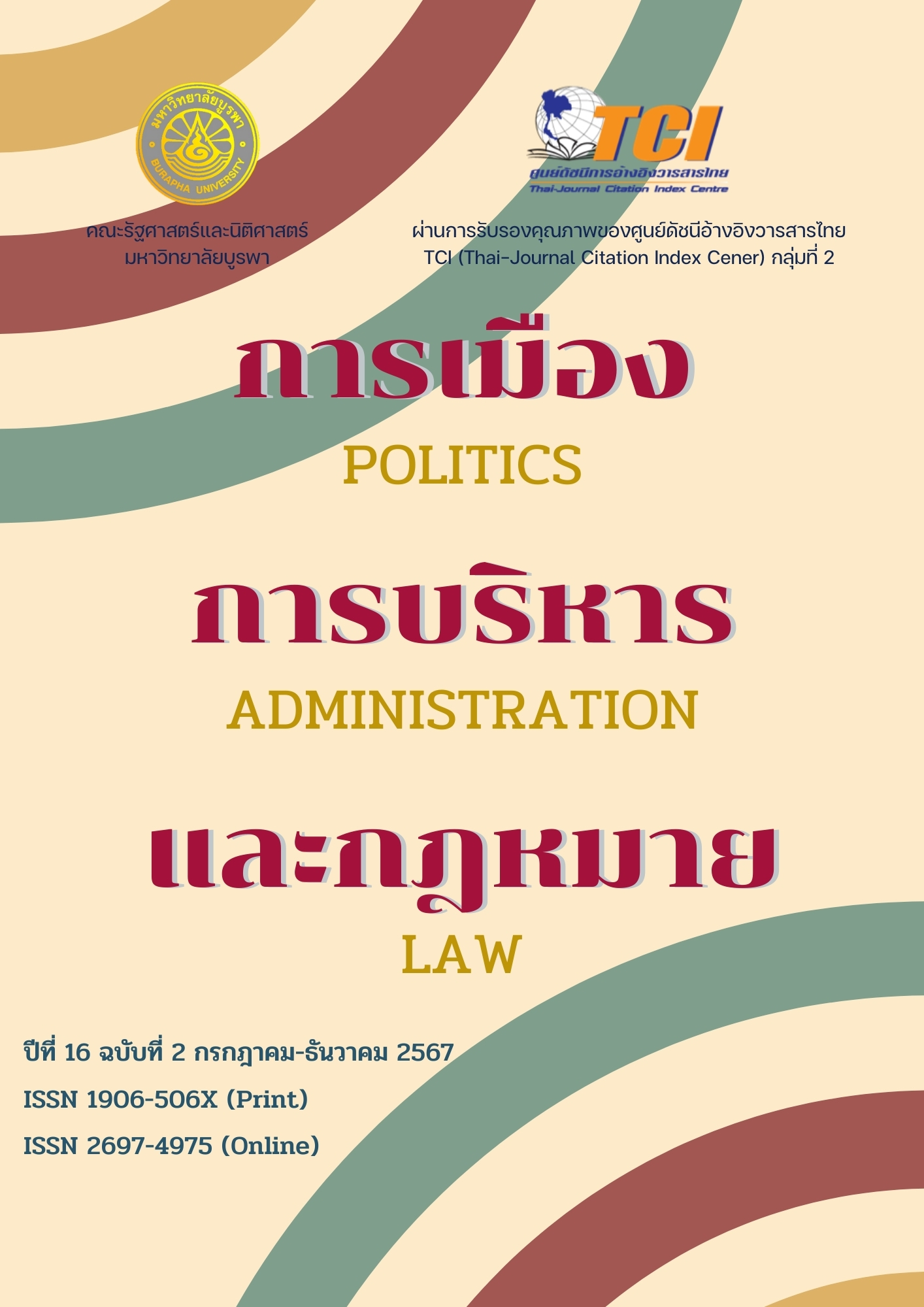Recidivism: The Study of Physical and Life Offences for Juvenile Offenders in Youth Detention Center in the Eastern Region
Keywords:
Recidivism, Youth Detention Center, Eastern RegionAbstract
The research project of recidivism has an objective to study the physical and life offences for juvenile offenders and to study some measures and forms of recidivism for juvenile offenders in the physical and life offences. The research uses mixed methodology between qualitative by in-depth interview and qualitative by designing questionnaire for collecting data. There are three following causes for juvenile recidivism.
1.The cause of juvenile recidivismtakes place when youth people have naughty, arrogant, disobedient, lazy behaviors. Most of them are uneducated, unemployment and have close relationship with rowdy friends. Their parents are not able to give any guidance to them. There are several causes of recidivism from juvenile offenders as follows. 1) youth people have some personal problems and are not able to solve; 2) youth people have no chance to continue their study in a higher level with fragile family conditions; 3) youth people are disobedient to their parents instruction and evacuates from their home; 4) youth people do not confess for their guilty and do not include themselves in the family and community; and 5) there are not much chance for juvenile offenders in rehabilitating treatment because most employers do not recruit the former offenders.
- The internal factor within the family is another cause of juvenile offenders recidivism. Most families are separated, low-income and the youth people are living with stepparents or their relatives. Most parents are not acted as good role models, for example, gambling, cigarette addiction. Therefore, the youth people have grown up with the lack of guidance with low life quality.
- The external factor relates to juvenile and youth people circumstances in recidivism. If youth people have naughty friends, for example, drug addiction, the abuse of drug and heroin. These groups of friend are involved in several criminal offences, for example, night loafers, wranglers, sexual offences, larceny, motorcycle racings, and group offenders.
References
เกษวรางค์ จิณะแสน. (2561). ปัจจัยที่มีอิทธิพลต่อการกระทำผิดซ้ำของเด็กและเยาวชนที่อยู่ระหว่างถูกคุมประพฤติใน สถานพินิจและคุ้มครองเด็กและเยาวชนกลาง. วิทยานิพนธ์ปริญญามหาบัณฑิต. มหาวิทยาลัยธรรมศาสตร์.
ภรรณิการ์ มณเทียร. (2559). ปัจจัยทางครอบครัว มีอิทธิพลต่อการกระทำผิดซ้ำของผู้ต้องขังชาย: ศึกษาเฉพาะเรือนจำพิเศษชลบุรี. สารนิพนธ์หลักสูตรสังคมสงเคราะห์ศาสตรมหาบัณฑิต, สาขาการบริหารและนโยบายสวัสดิการสังคม, คณะสังคมสงเคราะห์ศาสตร์, มหาวิทยาลัยธรรมศาสตร์.
ศิริวรรณ กมลสุขสถิต. (2563). แนวทางในการปันดินและแก้ไขการกระทำผิดซ้ำจากเด็กและเยาวชนใช้ ความผิดเดี่ยวกับคดีอาญาทางด้านอาชญากรรม. วารสารวิชาการคณะมนุษยศาสตร์และสังคมศาสตร์ มหาวิทยาลัยราชภัฏนครสวรรค์, 7(1), 1-19.
จารุณี แซ่ตั่ง. (2558). การศึกษาปัจจุบันมีผลต่อการไม่กระทำผิดซ้ำซาก:กรณีศึกษาผู้ฝึกและอบรมเด็กและเยาวชนบ้างกรุณา (Unpublished.Master’s.thesis). นครปฐม: มหาวิทยาลัยมหิดล.
ณภัสสร บุญเพ็ง. (2562). พฤติกรรมการกระทำผิดซ้ำของเด็กและเยาวชนพบว่ากลุ่มเพื่อนมีอิทธิพลต่อการกระทำผิดซ้ำมากที่สุดส่วนปัจจัยทางครอบครัวเป็นปัจจัยที่ผลักดันในการกระทำผิดครั้งแรกของเด็กและเยาวชน. วิทยานิพนธ์ศิลปศาสตรมหาบัณฑิต, สาขาการบริหารงานยุติธรรม, คณะสังคมสงเคราะห์ศาสตร์, มหาวิทยาลัยธรรมศาสตร์.
Downloads
Published
Issue
Section
License

This work is licensed under a Creative Commons Attribution-NonCommercial-NoDerivatives 4.0 International License.






